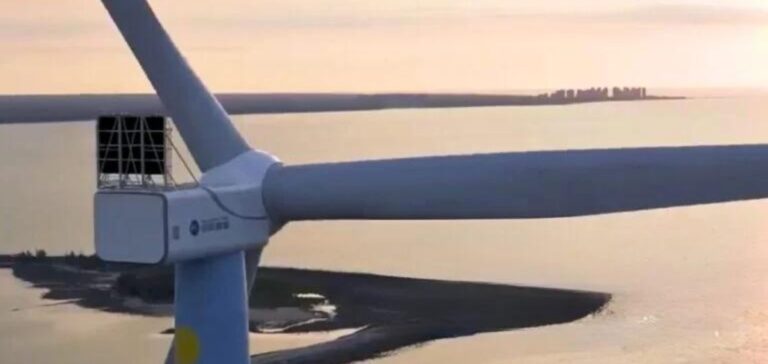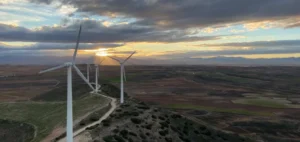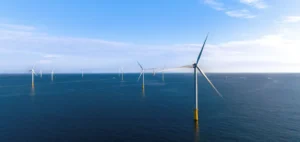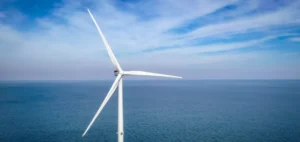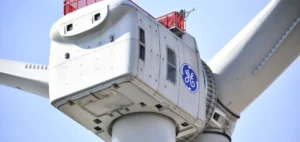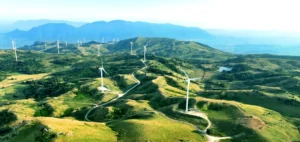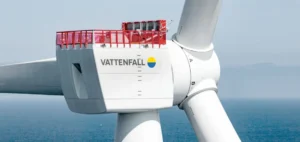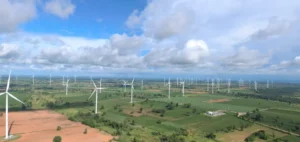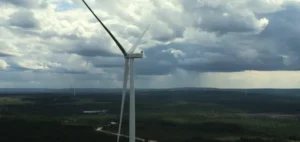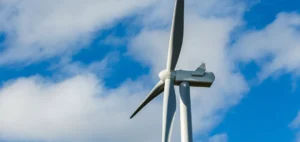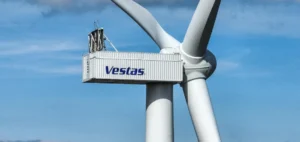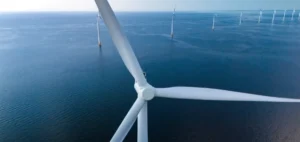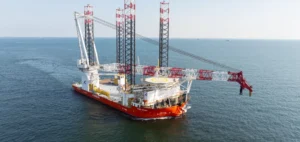The people of Schnabelwaid have decided. They want wind turbines on the hillside of their Bavarian village, testifying to the fact that, after years of inaction, Germany’s largest region is beginning to embrace this long-disliked energy source.
Wind power in Bavaria: Between hope for the future and environmental concerns
Vast as Ireland, prosperous and energy-hungry, Bavaria has been dragging its feet in deploying the wind power essential to Germany’s climate transition. It aims to be carbon neutral by 2045. Since January, the region has installed just five wind turbines and approved two wind farm projects. It ranks at the bottom of Germany’s sixteen Länder. Things seem to be moving as the federal government increases pressure on communities.
In Schnabelwaid, a village of around 900 inhabitants in northern Bavaria, the planned wind farm is to be installed in the heart of the nearby Kitschenrain forest. It passed by a hair’s breadth in April following a public consultation. Thirteen years ago, over 80% of local residents voted against an initial project for 18 wind turbines. This turnaround is attributable to the fears aroused by the complete phase-out of nuclear power. Across Germany since April, awareness of climate change and the precariousness of local finances.
The municipality is “heavily in debt” and the future wind farm will “generate income”, explains its mayor Hans-Walter Hofmann.
At a rate of 0.2 cents per kilowatt-hour produced, he estimates the future windfall at two million euros over 20 years of operation.
Resident Günther Angerer supports the turbine installation project because “what’s at stake is the future of the electricity supply for our offspring”, explains this pensioner, on his way to pick up his granddaughter from daycare.
Opponents of the project are adamant: installing wind turbines while sacrificing a piece of forest is “completely contradictory to climate policy”, according to Karin Bauer of the local Kitschenrain conservation movement.
“Groundwater”, which is rich in this area, “is in danger if ten wind turbines are built there”, adds neighbor Rosemarie Ballwieser.
Bavaria: Hopeful wind farm projects despite local resistance
The team will study these and other aspects during the project’s homologation procedure, scheduled to run until 2024.
According to Maximilian Weiss, the first blades of a dozen wind turbines, each with a total height of around 200 metres, “could be turning by autumn 2026”.
He is project manager at Uhl Windkraft, the company that will build and operate the park. For the moment, he shows them simulated on his computer screen. Production will cover the electricity needs of around 30,000 households, the equivalent of the nearby town of Bayreuth. By setting a target of allocating at least 1.4% of the country’s surface area to the installation of wind turbines by 2027, and at least 2% by 2032, compared with 0.7% to date. Olaf Scholz’s government, of which the ecologists are a part, has left the Länder with their backs to the wall, particularly Bavaria, which is governed by a regional leader, Markus Söder, who is one of the figures of the conservative CDU-CSU opposition.
The desire to avoid offending a population that is largely hostile to the works. For a long time, local councillors judged wind turbines to be unsightly in the landscape. A special rule blocks wind power in Bavaria. It sets the distance between a mast and a dwelling at at least ten times the height of the structure. Even if this lock will be de facto lifted.
The region still seems divided: “a real spirit of optimism” is blowing through the north, where “almost all the mayors are involved”, notes Green member of the regional parliament Martin Stümpfig, elected in an area close to Nuremberg.
In the south, near the Alps and the capital, Munich, very few projects are emerging apart from those supported by a few “villages”, adds the MP.
An initiative by industry professionals called “Bayern Wind” aims to help the regional government make a greater commitment to wind power.
The campaign to renew Bavaria’s parliament in October is well underway: “The outgoing government’s record on wind power is so bad that the CSU will want to focus only on national issues, in order to divert attention,” believes Mr. Stümpfig.


